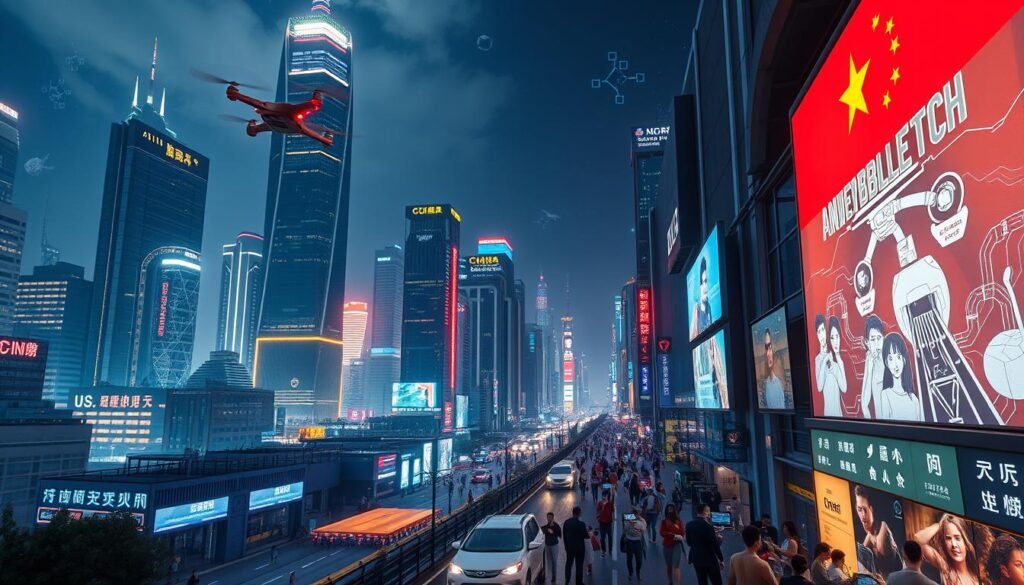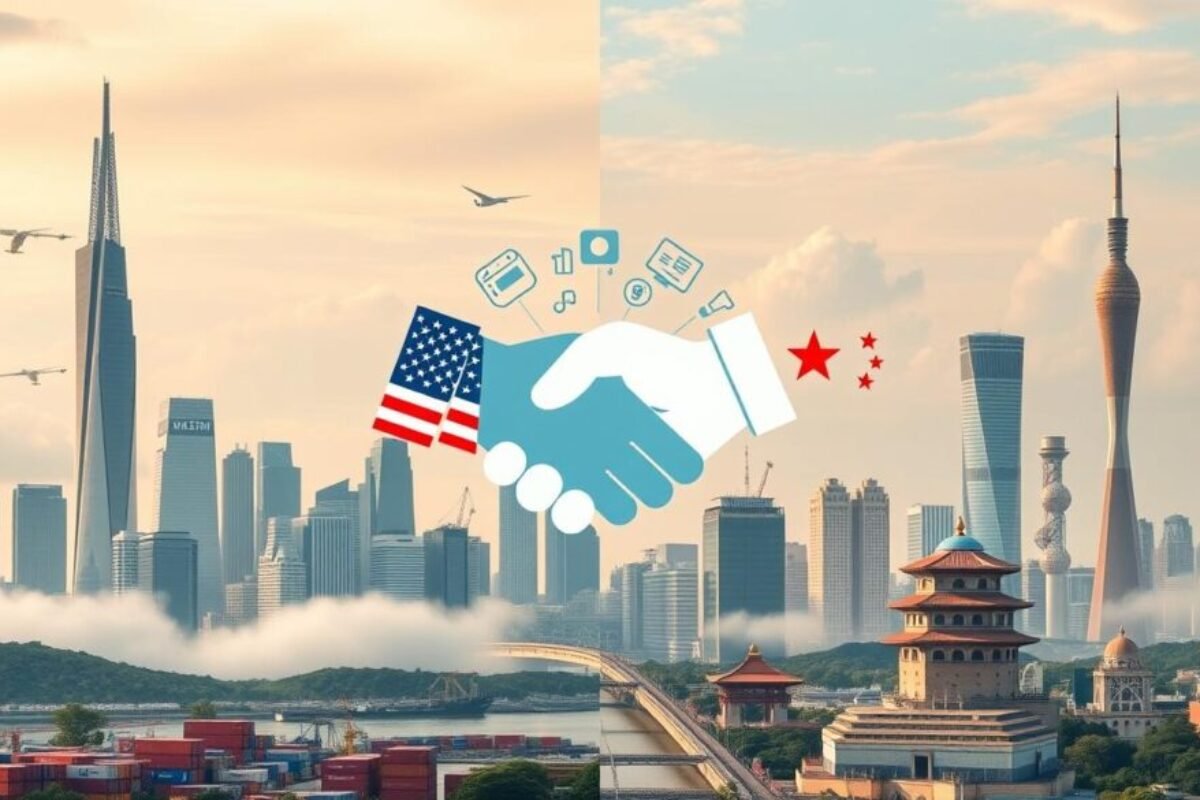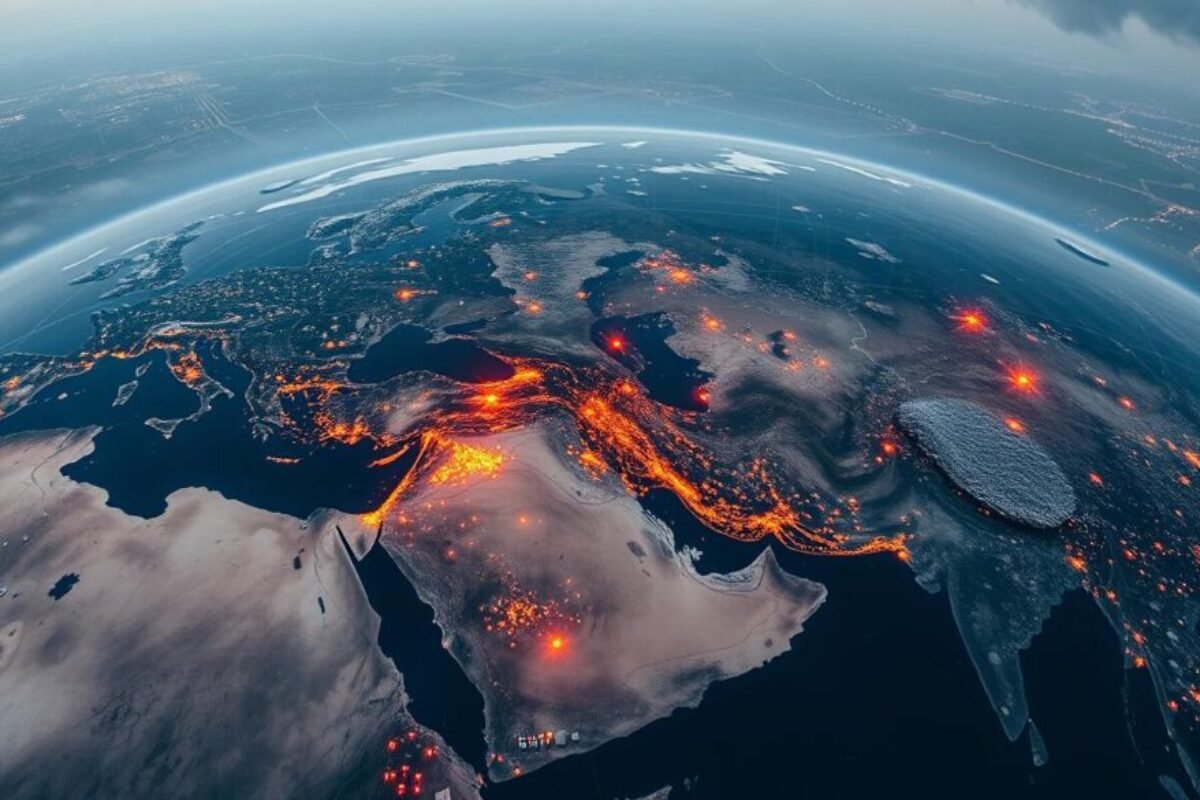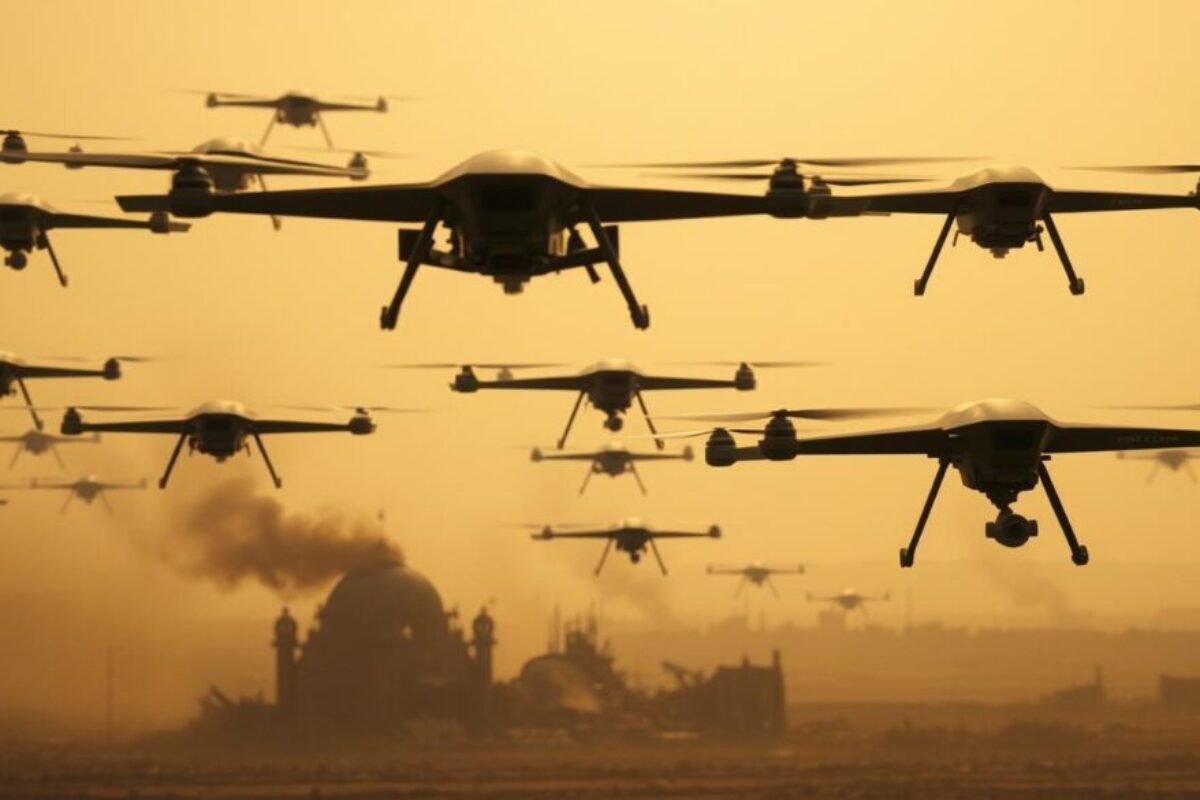The Future of US-China Relations: What to Expect in 2024
US-China relations are increasingly tense, driving a significant surge in investments in semiconductors and clean energy, which is reshaping the landscape. This change will greatly impact the world in the coming years. The 2024 US presidential election will play a big role in shaping this critical relationship. It will affect global stability, international diplomacy, and the ongoing rivalry between the two nations.
Key Takeaways
- The 2024 US election will be a key moment for US-China relations.
- Tensions have risen, with China’s role in the world changing under Xi Jinping.
- Both countries see each other as major threats, with the US wanting a stronger stance against China.
- Issues like military engagement, industrial policy, and working together on climate change are at stake.
- The US. has made big investments in semiconductors and clean energy, doubling spending on new projects1.
Current State of US-China Relations
The relationship between the US and China is complex. It involves diplomatic talks, political tensions, trade talks, and military actions. Despite efforts to improve, both countries have deep distrust and negative views of each other.
Key Diplomatic Developments in 2023
In 2023, there were important diplomatic moments between the US and China. The San Francisco summit in November was a key event. It aimed to rebuild trust after a Chinese spy balloon incident.
At the summit, China agreed to limit fentanyl exports and reopen military talks. Yet, deep distrust and competition remain2.
Impact of San Francisco Summit
The San Francisco summit was a step to prevent US-China relations from getting worse. But, its impact is limited. Both sides are skeptical of each other’s goals.
The summit didn’t lead to big wins on trade, technology, or Taiwan. This has led to cautious steps instead of real progress2.
Military Communication Channels
After the summit, military talks between the US and China started again. General Charles Q. Brown Jr. and General Liu Zhenli spoke in December. This is a positive step to avoid misunderstandings2.
Despite these efforts, US-China relations are fragile. The future will need ongoing talks, building trust, and finding common ground.
“The core geopolitical bargain involves the US accepting China’s growth while China reassures the US that it does not seek global preeminence.”2
As the two superpowers deal with their complex relationship, they need smart diplomacy and strategic thinking. They must also be willing to compromise to shape their future together.
Military and Security Dynamics in the Indo-Pacific
Tensions in the South China Sea and Taiwan’s status are causing big worries. The US and China are getting closer to a possible fight3. Experts think China might act against Taiwan by 20273. Both presidential candidates see China as a big threat. They have different plans for dealing with it3.
The Biden administration has promised to defend Taiwan more openly. It has also increased military spending in the area3. The Indo-Pacific is set to be very important in the future4. It will hold most of the world’s wealth and a third of its people4. This makes it very strategic4.
China plans to grow its economic influence in the Indo-Pacific4. The area is also seeing new technologies like robots and 5G4. Military tensions are rising because of more weapons and space competition4. The Indo-Pacific has 40 countries and over four billion people5. It’s expected to have half of the world’s GDP by 20405.
Climate change and biodiversity loss are big issues in the Indo-Pacific5. Canada has strong ties to the region because of its Pacific coast and trade5.
Economic and Trade Relations Analysis
The US-China trade war is changing the global economy. Both countries have made big moves in key industries6. China is now the third-largest market for US exports, showing strong trade ties6. A 2019 study found that trade with China raised the average US household’s buying power by $1,500 from 2000 to 20076.
Trade Policy Shifts
The trade war started by former President Trump in 2018 continues under President Biden7. Both sides have put up tariffs and duties7. President Biden has kept and even raised tariffs on important goods like electric vehicles and semiconductors7.
Technology Export Controls
The US is working to limit China’s access to key technologies8. This includes semiconductors and renewable energy8. The goal is to keep America ahead and stop China’s tech plans8.
Supply Chain Restructuring
Trade tensions have led to changes in supply chains for both the US and China6. They’re trying to use fewer imports from each other and find new partners6. This has caused a flood of Chinese exports in areas like electric vehicles and solar panels6.
The 2024 US election will greatly affect US-China economic ties8. It could make the economic gap wider or find a middle ground8. The world is watching how these economic giants will handle their relationship8.
Taiwan Elections and Regional Stability
The upcoming Taiwan elections are a big deal for US-China relations. Beijing is keeping up military actions in the Taiwan Strait. They’re also warning against voting for William Lai, the DPP candidate9. The election could make things worse in the region, possibly leading to more conflict9.
In the US, Taiwan is seen as a test of how tough leaders are on China. This puts a lot of pressure on them to show support for Taiwan.
Experts think a Harris administration might keep trade disputes with China going, but maybe not as intense as before10. There’s worry that a new Trump administration could start economic decoupling with China. This could mean higher tariffs, tech restrictions, and less cooperation10.
There’s also doubt about Trump’s views on Taiwan. Some fear he might make deals with China that could hurt US-China relations10.
If Trump wins again, Taiwan might have to give more money and take on more responsibilities in US alliances10. A new Trump administration might also try to fight back against China’s influence in the US This could lead to a bigger gap between the two societies10.
The Taiwan elections and their impact on US-China relations show how tense things are in Asia9. Everyone is watching the election closely to see how it will affect peace in the region9.
US-China Relations 2024, US-China Trade Policy, Asia-Pacific Tensions
Looking ahead to 2024, the future of US-China relations is unclear. Both sides have low hopes for their relationship. The lack of a clear agenda might make it hard for leaders to justify talks, worrying about tensions and economic rivalry11.
Strategic competition is a big issue. Areas like counternarcotics and military talks face hurdles as Beijing seems uninterested in working with Washington11. The balance of power in the Indo-Pacific is key, with China possibly taking action against Taiwan by 202711.
Strategic Competition Outlook
The 2024 US election will shape the industrial competition with China. Both countries see national industrial policy as vital, including tech and green energy11. The US and China, being top carbon emitters, are key in fighting climate change, working together on the Paris Agreement11.
Economic Decoupling Assessment
The economic ties between the US and China are slowly unwinding. Debates rage over how much this affects both economies. Trade between them has grown from $33 billion in 1992 to over $772 billion in 201712.
The US trade deficit with China hit $375 billion in 2017. This led the US to push for fair trade, protecting American jobs and businesses from unfair Chinese practices12.
The ongoing competition and decoupling will shape the Asia-Pacific region and beyond13. Strengthening US alliances and improving China’s ties with the US could help manage these rising tensions13.
“The contemporary US-China relationship has lasted slightly over 50 years, but has undergone various phases impacting global dynamics.”11
Technological Competition and Innovation
The battle for tech supremacy is heating up between the US and China. They’re racing in areas like AI, 5G, and chip making14. The Biden team has put limits on chip exports and hit companies like Huawei with sanctions14.
There’s hope for a dialogue on AI risks between the two nations. They might talk about keeping AI away from nuclear systems and tackling its dangers14.
China is showing its tech muscle, leading in 7 out of 10 advanced industries in 202015. The US was ahead in 315. The Hamilton Index for advanced industries was $10,097, with China at 25.3% market share15. This shows the need for constant innovation and investment in tech.
As the US and China compete, protecting intellectual property is key. Finding a balance between tech progress and keeping knowledge safe will be a big challenge14.

“The threat from an innovative China is significant, with the ability to mix quality, innovation, and low prices, challenging Western countries and companies.”15
The ongoing tech battle between the US and China stresses the importance of strategic investment, innovation, and protecting intellectual property. These factors will shape the future of global tech leadership1415.
| Metric | United States | China |
|---|---|---|
| Global Production in Advanced Industries (2020) | 3 out of 10 | 7 out of 10 |
| Composite Hamilton Index for Advanced Industries | – | $10,097 (25.3% market share) |
| GDP Comparable to United States | – | Yes |
| Productivity Growth Projection | – | Expected to surpass United States over next 3 decades |
Climate Change Cooperation Prospects
The US and China, the world’s biggest carbon emitters, must work together on climate change cooperation. They can do this through joint environmental initiatives and green technology. This is key to tackling the global challenge of climate change16.
Joint Environmental Initiatives
The 2024 US election could change how the US and China work on climate issues. The outcome might lead to more cooperation or less. But, their past work on global climate agreements has been shaky17.
It’s hard to predict what will happen next. But, their efforts are important for the planet’s future18.
Green Technology Development
China is key in making green technology because it produces most of the world’s essential goods. Working together on renewable energy and carbon capture can help fight climate change.
| Indicator | United States | China |
|---|---|---|
| Greenhouse Gas Emissions (2020) | 14.5% of global total | 27.8% of global total |
| Renewable Energy Capacity (2021) | 121 GW | 330 GW |
| Electric Vehicle Sales (2022) | 750,000 units | 5.9 million units |
Both the US and China are critical in fighting climate change. They need to work together more on green technology16.
“Addressing climate change requires a global, collaborative effort. The United States and China, as the world’s largest economies and emitters, have a duty to lead the way in developing innovative solutions and working together to protect our planet.”
Good climate change cooperation and a shared goal in environmental initiatives and green technology can help both countries. It can also inspire the world to fight climate change together.
Global Governance and International Leadership
As tensions between the US and China simmer, a possible scenario shows them working together in some areas19. The US might let China grow while keeping its power in the region. China could be happy with being almost equal in East Asia and playing a bigger role globally without trying to take over the US’s place.
But, the road ahead is full of obstacles20. Big issues like economic problems, Chinese military actions in the Indo-Pacific, Taiwan’s safety, China’s support for Russia, and disinformation campaigns are key in US-China relations20. The US needs to tackle these by stopping Chinese military actions, building stronger alliances, and improving cyber and space defenses to fight Chinese influence.
| Metric | Statistic |
|---|---|
| Americans perceiving “China’s development as a world power” as a serious threat | 58%19 |
| Americans having “a great deal” or “a fair amount” of confidence that China will “responsibly deal with world problems” | 19%19 |
| Chinese public’s view that the US wants to preserve its “global hegemony,” depriving China’s right to develop | Widely Held19 |
The rivalry between the US and China keeps growing19. Beijing and the Chinese people think no words from their leaders or a change in the US government will change Washington’s plans19. On the other hand, Washington wants China to stop pushing for Taiwan, end unfair trade practices, and stop its partnership with Russia.
In this complex situation19, Ambassador Nicholas Burns is realistic about US-China relations19. Military talks have started again, with the US and China’s top military leaders talking.
Leadership Dynamics in International Relations
The world is watching as these global powers interact19. 2024 is not expected to see big improvements in US-China relations19. Beijing is pushing Taiwan to make the “right choice” to avoid war, showing ongoing tensions in the Taiwan Strait19. Any escalation in the Taiwan Strait or East/South China seas could lead to big problems, showing how fragile global stability is and the need for good international diplomacy.

“The US must address China’s influence operations and disinformation campaigns, push back on military aggression in the Indo-Pacific, and strengthen regional alliances.”20
Strategic Industries and National Security
The rivalry between the US and China is growing. Both are focusing on key industries for national security. The semiconductor industry is a major focus, with the US trying to boost its production and limit China’s access to advanced chips21.
Semiconductor Industry Focus
The CHIPS and Science Act, a bipartisan bill by President Biden, aims to support domestic semiconductor manufacturing. It allocates $53 billion for this purpose21. This move aims to reduce US dependence on Taiwan, which makes almost 90% of the world’s advanced chips21.
Taiwan’s largest chip maker, TSMC, is expanding in Arizona. This is partly in anticipation of US protectionist policies21.
Critical Supply Chains
Critical supply chains, like rare earth minerals, are under close watch. The US is looking to diversify its sources of these minerals, as China dominates global production21. This effort is part of a broader trend of “technology decoupling” between the US and China.
| Indicator | United States | China |
|---|---|---|
| Rare Earth Mineral Production (2021) | 15,000 metric tons | 140,000 metric tons |
| Share of Global Rare Earth Mineral Production | 12% | 60% |
| Rare Earth Mineral Reserves | 1.5 million metric tons | 44 million metric tons |
The competition between the US and China will likely focus on critical industries and supply chains22. Both countries are working to secure their economic and technological advantages. This has big implications for global trade and innovation.
Diplomatic Initiatives and Communication Channels
Recently, the US and China have worked on improving their relationship. They aim to manage risks and stabilize ties despite growing competition23. The 2023 San Francisco summit was a big step, opening up communication channels like military talks24. Yet, trust issues between them are big, and how well these talks work is uncertain23.
As the world changes, finding ways for the US and China to coexist is key23. They might work together on issues like climate change and global rules24. They also need clear rules for when they disagree to avoid big conflicts24.
- Strengthening communication channels and maintaining open dialogues between the US and China, including military-to-military exchanges, to foster mutual understanding and risk management.
- Exploring opportunities for cooperation on global issues such as climate change, public health, and nuclear nonproliferation, where both countries have a shared interest in finding solutions.
- Developing a set of guardrails and conflict management mechanisms to prevent tensions from spiraling out of control and maintain stability in the US-China relationship.
With a forecasted global economic downturn and the fragmenting of the world into major blocs, the US and China must be smart and quick in their diplomacy23. By improving communication and finding common ground, they can build a better relationship. This will help their people and the world24.
“Diplomacy is the art of telling people to go to hell in such a way that they ask for directions.”
– Winston Churchill
Conclusion
Looking ahead to US-China relations 2024, managing the complex ties between the US and China will be a big challenge. The geopolitical tensions cover many areas, like military actions in the Indo-Pacific and economic and tech rivalry23.
Despite the many challenges, there’s hope for better relations. The 2024 summit in San Francisco between Presidents Biden and Xi Jinping was a chance for direct talks. It showed possible areas for cooperation3. Finding common ground and managing their rivalry responsibly is more urgent than ever.
The future of US-China relations hinges on both sides navigating through tough times. While a return to deep engagement might be hard, a stable relationship is possible. It depends on Washington and Beijing’s willingness to make compromises2. The 2024 US election will be key in shaping this important relationship.





March 12, 2025 @ 7:23 am
I don’t think the title of your article matches the content lol. Just kidding, mainly because I had some doubts after reading the article.
July 31, 2025 @ 8:06 pm
Thank you for your sharing. I am worried that I lack creative ideas. It is your article that makes me full of hope. Thank you. But, I have a question, can you help me?
August 4, 2025 @ 11:36 am
Can you be more specific about the content of your article? After reading it, I still have some doubts. Hope you can help me.
August 26, 2025 @ 10:07 am
I don’t think the title of your article matches the content lol. Just kidding, mainly because I had some doubts after reading the article. https://www.binance.com/tr/register?ref=W0BCQMF1